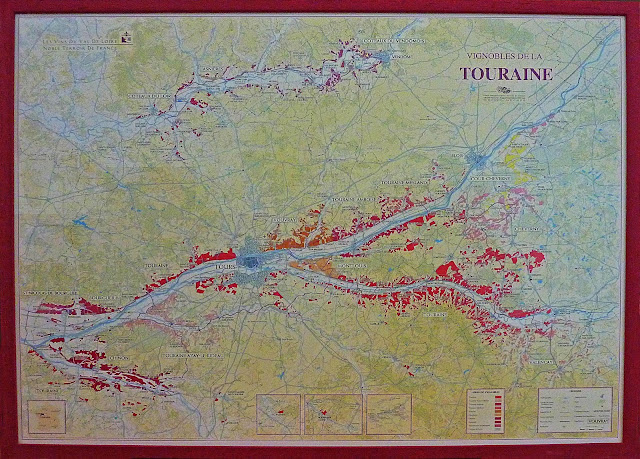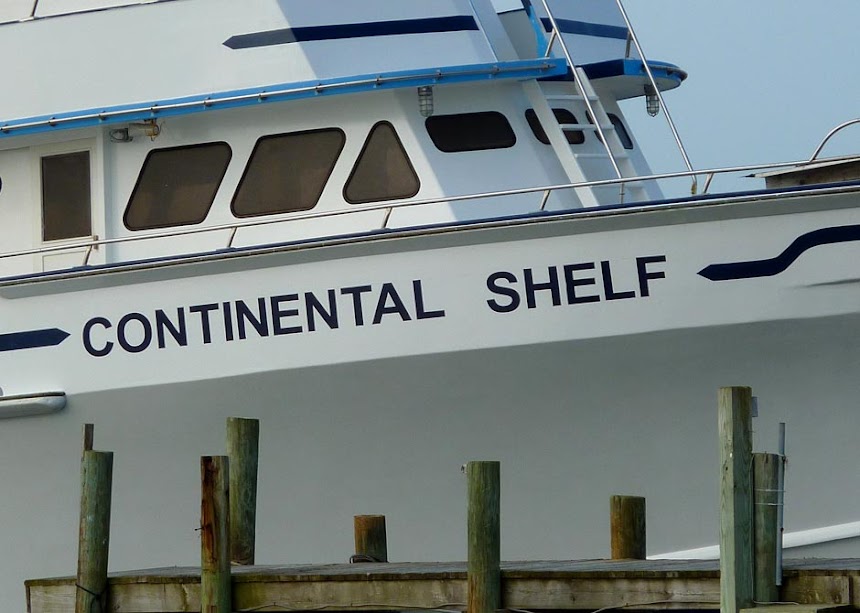Sunday afternoon MA and I took a drive down to Salter Path. We were just "ridin’ and lookin’," as we say, and when we got to Salter Path we saw signs along the road for two or three fish markets. One of them was open. I wanted to buy some fresh local shrimp, because I hadn't had any since my arrival.
Salter Path was first settled, at least seasonally, from the mid-19th to the early 20th century, mostly by families moving west and south down the Banks — the barrier islands — from an old whaling community called Diamond City, located near Cape Lookout. Local whaling was on the decline, because people no longer needed whale oil for their lamps. One source says the first permanent settlers established the village of Salter Path in 1896.
 A map of Carteret County, North Carolina, showing Salter Path,
Morehead City, Beaufort, and Cape Lookout
A map of Carteret County, North Carolina, showing Salter Path,
Morehead City, Beaufort, and Cape Lookout
The "Salter Pathers" were fishermen. They kept cattle, hogs, and chickens, and they had vegetable gardens in the sandy soil. They hunted and ate loons, ducks, robins, and other birds. They dug clams and harvested oysters and scallops. They traded salted fish — mullets, especially — for corn and sweet potatoes — with people on the mainland. They caught the fish by dragging long seine nets, which were made by the families themselves, in the surf when the mullet were "running" along the beaches. In later years, they used (and
still use)
tractors to haul in the nets.
 The Willis Seafood Market in Salter Path
The Willis Seafood Market in Salter Path
Salter's path was the path from the ocean beach to the sound shore across the narrow strip of sand called Bogue Banks. People lived on the sound side but worked on the ocean side to catch mullets. The path was near the Salter family home. The other families at Salter Path were named Guthrie, Gould, Dixon, Smith, Willis, Adams, and Lewis. They were all squatters — they held no title to the land they lived on. The village of 33 hectares (80 or so acres) was bought by a man from Boston in the early 20th century and the settlers were allowed to stay.
 North Carolina "brown shrimp" from the Willis Seafood Market
North Carolina "brown shrimp" from the Willis Seafood Market
It was only in 1979 that the Salter Pathers finally got title to their land, after they took the case to court. Of course, then they started having to pay property taxes. The children of the Salter Path families went to elementary, junior high, and high schools with us Moreheaders, first at the old town school and later at a consolidated high school that served the whole western end of the county. The Salter Pathers spoke English with a slightly different old English brogue from ours, so they were easy to recognize.
 Vesta Willis's specialty is home made crab cakes,
Vesta Willis's specialty is home made crab cakes,
made with the flesh of the Atlantic blue crab
(Callinectes sapidus— "beautiful, savory swimmer").
I'm not sure when the paved road from Morehead City to Salter Path — about 10 miles/16 km — was built, but it was after the first bridge from the mainland to the barrier island was built in the 1920s. For years after the bridge was built and before the road was built, I've been told, the Salter Pathers would drive their trucks along the beach on hard sand at low tide, day or night, to get to Atlantic Beach and Morehead, where there were restaurants, dance halls, and movie theaters.
 Don't these look good?
Don't these look good?
When I was a little boy, the paved road ended at Salter Path, or a couple of miles beyond the village. Then there was a stretch of wild beach and dunes for another 15 miles down to the end of the island at Bogue Inlet. By the time I was in high school, the road had been extended through that section and the "land" (sand) was being developed for tourists with beach cottages and motels.
 At Willis Seafood in Salter Path
At Willis Seafood in Salter Path
MA and I drove to Salter Path and turned off to see if the Willis Fish Market was open. It was. The woman who owns it, Vesta Willis, greeted us. She was very talkative and curious to know who we were. We knew a lot of the same local people. She told us she had grown up in Morehead City and had married a man from Salter Path when she was 16 (in 1957).
 Nowadays Salter Path is also a beach resort...
Nowadays Salter Path is also a beach resort...
I believe she said her husband had passed away a few years ago, but I'm not sure about that, or what this Mr. Willis's first name was. (My maternal grandmother was a Willis from Morehead City.) She talked about what life in Salter Path was like in the 1950s and 1960s. How small the houses were, how minimal the creature comforts were, how everybody helped everybody else to survive.
 ...and here's somebody enjoying the bright mid-March sun.
...and here's somebody enjoying the bright mid-March sun.
Looking back on it, we were all very poor back then. But we didn't suffer, except from the rare cold spells in the winter and the blistering heat in the summer. Not to mention the mosquitoes, horseflies, sandspurs (we children mostly went barefoot in summer), and hurricanes. You got used to the summer heat and humidity, and there was usually a sea breeze at night. On stormy nights, from my bedroom window a mile as the gull flew from the beach, I could hear the surf pounding the shore. Just think what that sounded like in Salter Path.
I bought a pound of the local "brown" shrimp (
Penaeus aztecus) from Vesta Willis, and we had a nice visit. I cleaned the shrimp (that means shelling and deveining them) at home and cooked them in a little oil in a frying pan. French Wikipedia says these are called
crevettes royales grises in French — "royal gray shrimp." I seasoned them with salt and pepper only, because I just wanted the shrimp taste, and I cooked them until they were barely done. They were right fittin'.
 Touraine vineyards, including the Loir River area to the north —
Touraine vineyards, including the Loir River area to the north — Progressively closer views — here you can see the vineyards
Progressively closer views — here you can see the vineyards Here's the eastern Touraine, showing the Cher and Loire river valleys.
Here's the eastern Touraine, showing the Cher and Loire river valleys.















































